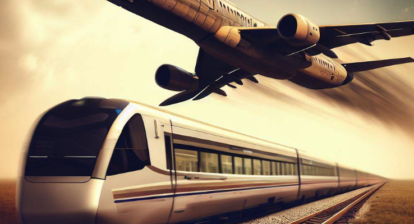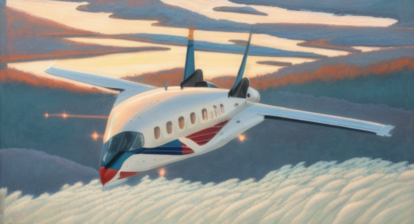Milestones in Aviation: From Wright Brothers to Concorde, Boeing 747, and Airbus A380
I ntroduction: Aviation, an extraordinary testament to human achievement, has witnessed remarkable milestones since the groundbreaking flight of the Wright Brothers in 1903. From the advent of commercial aviation to the awe-inspiring supersonic era and the era of colossal double-decker jets, this article takes you on a captivating journey through history, highlighting the crucial moments that have shaped the aviation industry. Delve into the monumental achievements of Concorde, Boeing 747, and Airbus A380, which have left an indelible mark on aviation and forever transformed the way we travel.
ntroduction: Aviation, an extraordinary testament to human achievement, has witnessed remarkable milestones since the groundbreaking flight of the Wright Brothers in 1903. From the advent of commercial aviation to the awe-inspiring supersonic era and the era of colossal double-decker jets, this article takes you on a captivating journey through history, highlighting the crucial moments that have shaped the aviation industry. Delve into the monumental achievements of Concorde, Boeing 747, and Airbus A380, which have left an indelible mark on aviation and forever transformed the way we travel.
- The Wright Brothers’ Pioneering Flight: On a chilly December morning in 1903, Orville and Wilbur Wright achieved the world’s first powered, controlled, and sustained flight in Kitty Hawk, North Carolina. Their Flyer I aircraft covered a distance of 120 feet, igniting the age of modern aviation and sparking a worldwide fascination with flight.
- Concorde: Supersonic Elegance: In 1969, Concorde, a supersonic passenger jet, took to the skies, revolutionizing long-distance travel. Developed jointly by British and French engineers, Concorde could cruise at speeds exceeding Mach 2 (twice the speed of sound) and halve travel times across the Atlantic. It became an emblem of luxury, catering to elite travelers who valued speed and exclusivity.
- Boeing 747: The “Queen of the Skies”: Introduced in 1970, the Boeing 747, often hailed as the “Queen of the Skies,” was the world’s first wide-body commercial aircraft. Its iconic humpbacked design and unparalleled capacity transformed the economics of air travel, making long-haul flights more accessible to a larger number of passengers. The Boeing 747 became a symbol of global connectivity and remained a dominant force in aviation for decades.
- Airbus A380: The Giant Double-Decker: In 2007, Airbus unveiled the A380, the world’s largest passenger aircraft. With its distinctive twin-deck layout and spacious interiors, the A380 could carry over 800 passengers, offering a new level of comfort and luxury for long-haul travel. However, its development coincided with changing market demands, and its success was hindered by increased fuel costs, leading to a limited number of airlines operating this colossal jet.
- Cultural Impact and Pop Culture: Concorde, Boeing 747, and Airbus A380 have become cultural icons, making appearances in various movies, TV shows, and documentaries. Concorde’s graceful silhouette symbolized the epitome of sophistication and speed, featuring in films like “Airport ’79” and “The Fifth Element.” The Boeing 747’s majestic appearance graced the screens in movies like “Air Force One” and “Die Hard 2.” While the Airbus A380’s impressive scale has been showcased in documentaries exploring the world of aviation and engineering marvels.
- Important Events and Noteworthy News: Throughout the years, these aircraft witnessed significant events, including Concorde’s retirement in 2003 after nearly three decades of service, marking the end of an era for supersonic travel. Moreover, the Airbus A380 faced production challenges and reduced demand, leading Airbus to announce the discontinuation of the model in 2021.
Conclusion: Aviation’s journey from the Wright Brothers’ pioneering flight to the magnificent Concorde, Boeing 747, and Airbus A380 has been nothing short of extraordinary. These iconic aircraft have captured the world’s imagination, defining the past, present, and future of air travel. As we celebrate their legacies, let us cherish the indomitable spirit of innovation that continues to shape the aviation industry.
Signature: By Vicente Jubes – Aviation Network Group
Reference link:
https://www.linkedin.com/groups/50895/
Remember to visit our magazine section: https://aviationnetwork.us/magazine/






